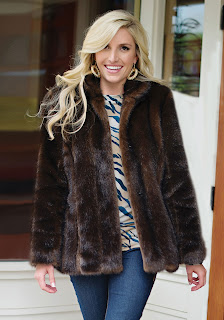What is Faux Fur | Processing and Characteristics of Faux Fur
Last updated on July 11th, 2023 at 12:46 am
Definition of Faux Fur
It is also called Fake or Imitation Fur or Pile Fabric. The insulative property of pile fabrics is based upon the principle of air spaces entrapped between fibres. But the fibres, which are usually acrylic, modacrylic, or a combination of them, are held in place by being knitted into a base material. The resultant high-pile material is converted into imitation fur fabric by special processing.
Processing of Imitation Fur
To simulate natural fur coats, the materials are processed through the following special finishes:
Heat Setting
To preshrink the fabric in length, giving it stability and expanding the diameter of the pile fibres. If the fabric is made by the uncut-loop method, it must be napped to cut the loops prior to heat setting.
Tigering
It uses a roll of wire brushes to remove loose fibres from the face of the fabric.
Shearing
Rough shearing by helical knives to the desired height.
Electrifying
It is a polishing technique that gives a desired luster by combing the fabric in both directions with a heated grooved cylinder.
Application of chemicals
Wet application of chemicals, such as silicones and various resins (depending upon the pile fibre), to further increase the smoothness and luster of the pile fabric.
Electrifying
Electrifying a second time to bring out the luster.
Finish Shearing
It is a light shearing to remove loose fibres raised by a previous treatment.
Embossing
Sometimes it is done instead of shearing when the fabric is to simulate the curl of such furs as karakul, Persian lamb, or broadtail. The fabric may first be processed through an offset and swirling machine with rows of narrow rotary wire brushes, which permanently deform the lay of the fibres in adjoining strips and cause variations in light reflection. The fabrics are then passed under heated embossing steel rollers that are cut to resemble the natural curl of the fur they are intended to imitate. The curl is permanently heat-set into the fabrics.
Characteristics of Imitation Fur
- The imitation fur fabrics, which must be labeled as required by law, are much less expensive than genuine fur, but generally more costly than quilted fabrics.
- They are soft, resilient, durable, and warm.
- When not made of wool, they cannot be damaged by moth larvae.
- They may be dry-cleaned or laundered, depending on the construction.
- On close examination, they do not have the same appearance.
- Pile fabrics are insulative and warm.
- Pile fabrics can be made to look very attractive and they give the immediate sensation of warmth on contact.
- They may pill, becoming shabby after a short time unless they are cleaned and combed or brushed regularly.
- These fabrics may be heavier than quilted fabrics and some tend to be more rigid and restrictive if adhesives are applied to the backing to secure the pile.
- The knitted construction of some pile fabrics cannot be windproof, and rain or snow readily sticks to pile and is more difficult to dry or brush off than from quilted fabrics.





I your writing style genuinely loving this internet site .